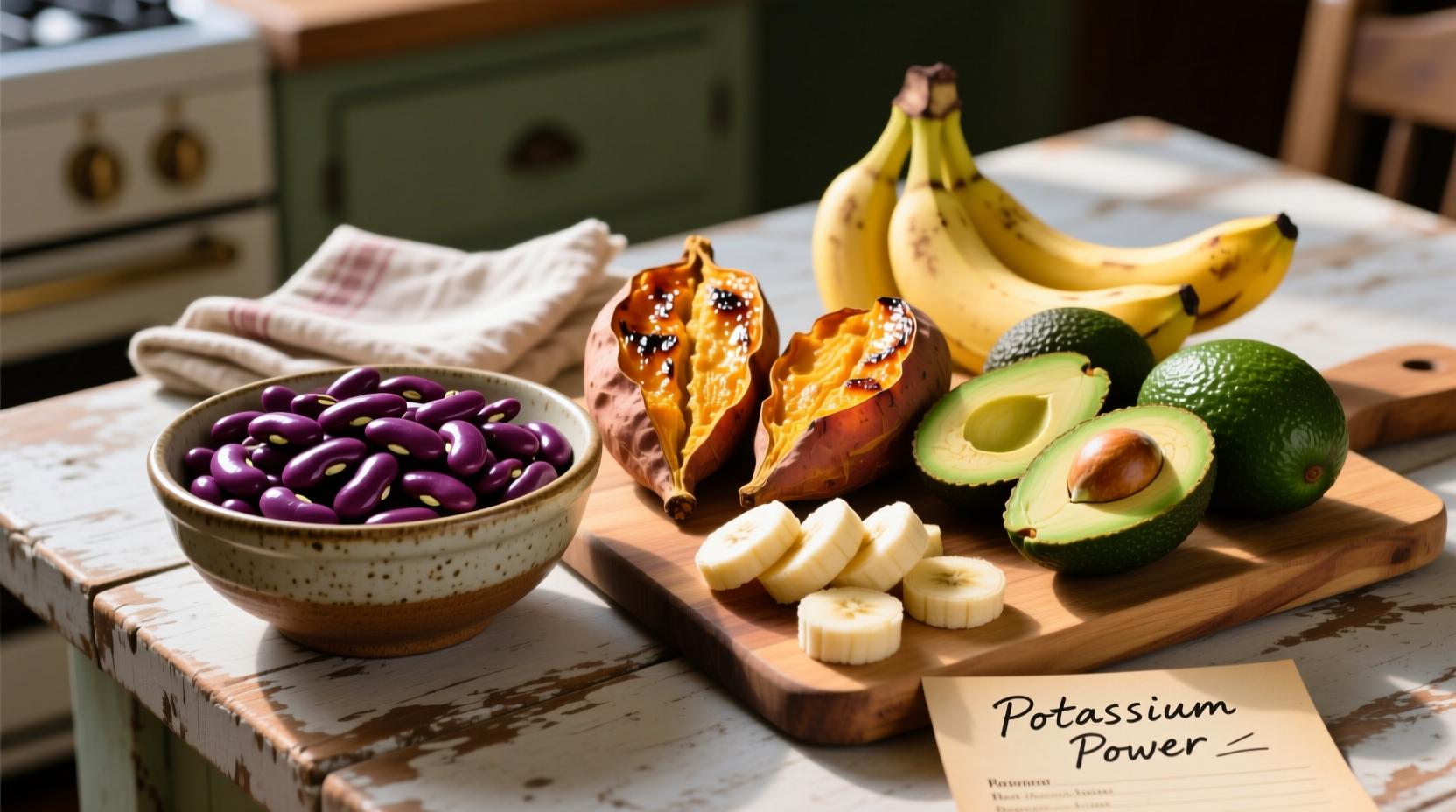Bananas aren't the potassium powerhouse you've been led to believe. White beans, sweet potatoes, and avocados actually contain significantly more potassium per serving, with cooked white beans delivering 1,189mg per cup—more than double a banana's 422mg. These top potassium sources support heart health, muscle function, and blood pressure regulation far more effectively than commonly assumed fruits.
Understanding which foods contain the most potassium is crucial for maintaining proper bodily functions. Potassium serves as an essential electrolyte that helps regulate fluid balance, muscle contractions, and nerve signals. When you're searching for what food has the most potassium, you're likely seeking reliable information to support heart health, manage blood pressure, or address potential deficiencies.
Why Potassium Matters More Than You Think
Most adults require 2,600-3,400mg of potassium daily according to the National Institutes of Health, yet fewer than 3% of Americans meet this recommendation. Low potassium intake correlates with increased risk of hypertension and cardiovascular disease. Unlike popular belief, bananas rank only 10th among common potassium sources—making it essential to identify truly high-potassium options for optimal health.
The Top Potassium Powerhouses Ranked
Based on USDA FoodData Central measurements, these foods deliver the highest potassium concentrations per standard serving. The following comparison eliminates common misconceptions about potassium sources:
| Food (1 cup unless noted) | Potassium (mg) | % Daily Value | Compared to Banana |
|---|---|---|---|
| White beans (cooked) | 1,189 | 25% | 2.8x more |
| Sweet potato (baked) | 950 | 20% | 2.3x more |
| Avocado (1 medium) | 957 | 20% | 2.3x more |
| Spinach (cooked) | 840 | 18% | 2x more |
| Salmon (3 oz) | 534 | 11% | 1.3x more |
| Banana (1 medium) | 422 | 9% | Baseline |
This USDA FoodData Central comparison reveals significant differences between popular perception and actual potassium density. While bananas remain convenient, they simply don't deliver the concentrated potassium levels found in legumes, certain vegetables, and fish.
Practical Ways to Boost Your Potassium Intake
Incorporating high-potassium foods doesn't require drastic dietary changes. Try these chef-tested techniques that maximize both flavor and nutrient retention:
- Bean integration: Add white beans to soups, salads, and purees—their mild flavor absorbs seasonings while delivering maximum potassium
- Smart potato preparation: Bake sweet potatoes with skin intact (where 20% of potassium resides) and pair with healthy fats to enhance nutrient absorption
- Avocado versatility: Use avocado as sandwich spread, salad topper, or blended into smoothies for creaminess without dairy
- Leafy green optimization: Lightly steam spinach instead of eating raw—this concentrates nutrients while improving bioavailability
Professional chefs like those at leading heart-health institutions recommend combining potassium-rich foods with vitamin C sources (like bell peppers or citrus) to enhance mineral absorption. This practical approach to foods highest in potassium makes nutritional optimization accessible for everyday cooking.

Who Needs More Potassium and Important Considerations
Certain populations require special attention to potassium intake. Athletes lose significant potassium through sweat—replacing just 10% of lost electrolytes through bananas would require consuming seven daily. The American Heart Association specifically recommends potassium-rich diets for individuals managing hypertension, noting that increased intake can lower systolic blood pressure by 4-5 mmHg.
However, context matters significantly. People with kidney disease must carefully monitor potassium intake as impaired renal function affects electrolyte balance. The National Kidney Foundation advises those with chronic kidney disease to work with dietitians to determine appropriate levels—demonstrating that high potassium foods for heart health aren't universally appropriate.
Timing also influences effectiveness. Consuming potassium-rich foods within 30 minutes after exercise helps replenish electrolytes more efficiently than supplementation alone. This practical insight transforms how active individuals approach potassium-rich foods for athletes.
Debunking Common Potassium Myths
Several misconceptions persist about dietary potassium. Many believe supplements are equivalent to food sources, but research published in the American Heart Association Journal shows whole food sources provide additional phytonutrients and fiber that enhance cardiovascular benefits. Others think cooking destroys potassium, yet methods like steaming actually concentrate these minerals by reducing water content.
The most persistent myth positions bananas as the ultimate potassium source. While convenient, their potassium density pales compared to alternatives. Understanding these distinctions helps you make informed choices about the best dietary sources of potassium for your specific health goals.
Your Potassium Action Plan
Start incorporating these evidence-based strategies today:
- Replace one daily grain serving with white beans or lentils
- Choose sweet potatoes over regular potatoes in three meals weekly
- Add half an avocado to your largest meal for sustained potassium release
- Include cooked spinach in at least two meals (raw provides only 10% of cooked content)
- Pair potassium-rich foods with vitamin C sources to boost absorption
These simple adjustments can increase your daily potassium intake by 1,000-1,500mg without drastic dietary changes. Tracking your intake using apps like Cronometer helps verify you're meeting the NIH-recommended daily values based on your specific health profile.











 浙公网安备
33010002000092号
浙公网安备
33010002000092号 浙B2-20120091-4
浙B2-20120091-4